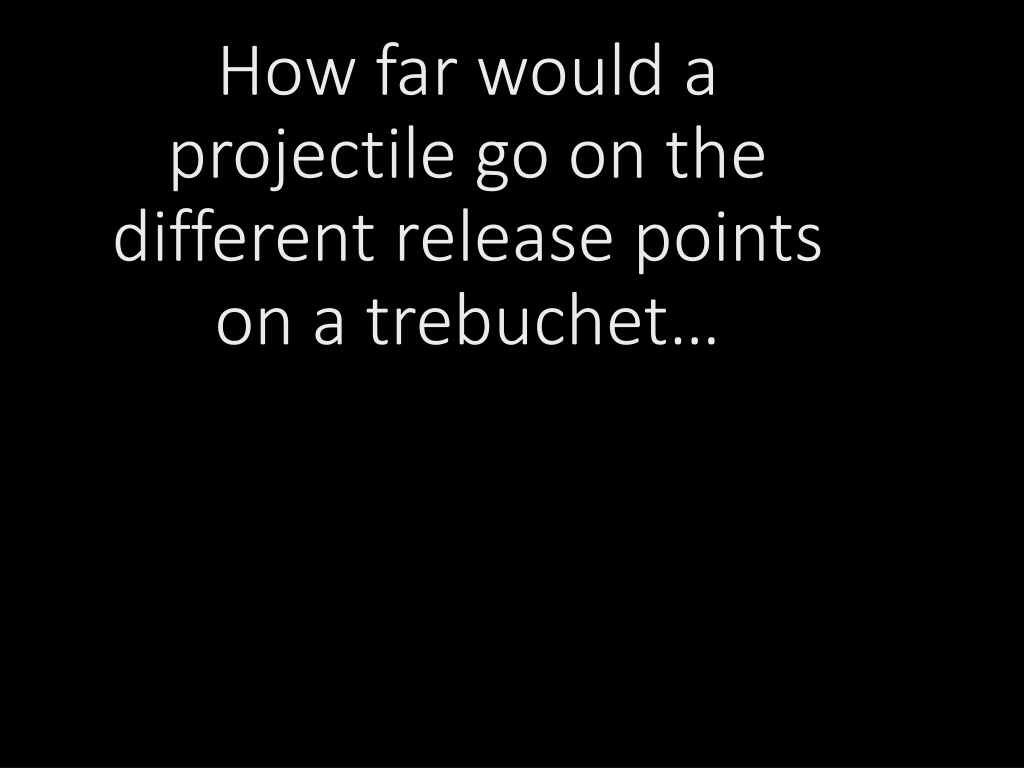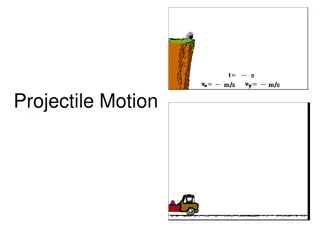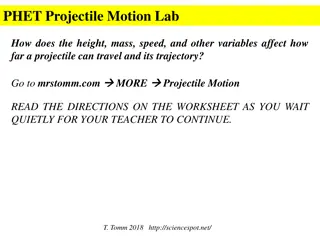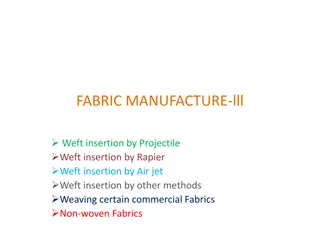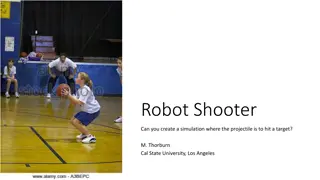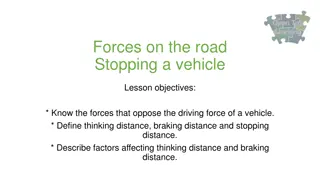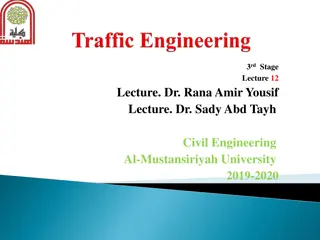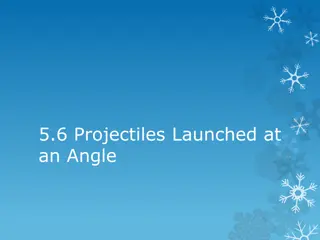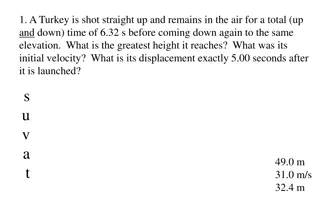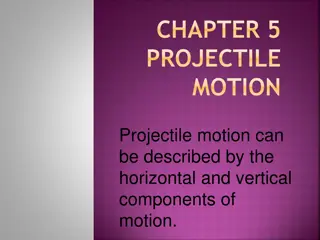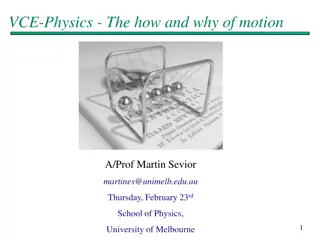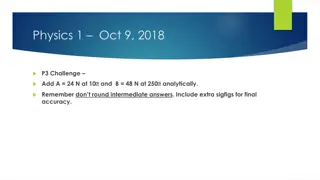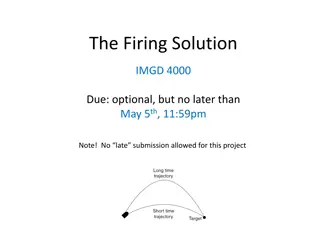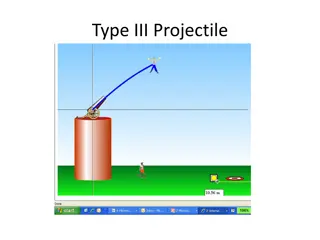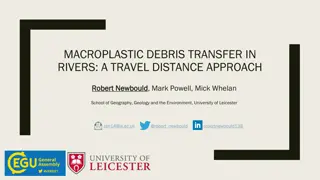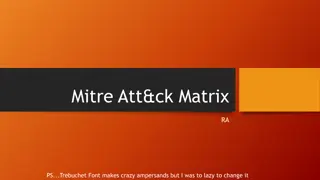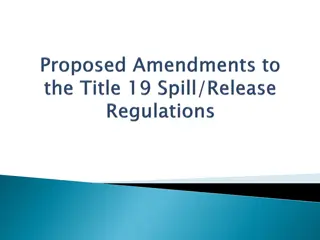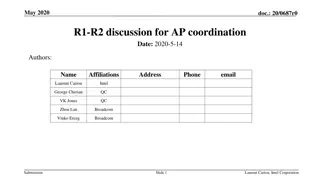Maximizing Projectile Distance with Trebuchet Release Points
Experiment conducted to determine the optimum release point on a trebuchet arm for maximum projectile distance. Hypothesis stated that the projectile would travel farthest when released at the longest point. Limited prior research on trebuchet arm length and its impact on distance. Materials used included ping pong balls, popsicle sticks, hot glue gun, and coins. Procedure involved building the trebuchet base and fortifying it, then testing various release points.
Download Presentation

Please find below an Image/Link to download the presentation.
The content on the website is provided AS IS for your information and personal use only. It may not be sold, licensed, or shared on other websites without obtaining consent from the author. Download presentation by click this link. If you encounter any issues during the download, it is possible that the publisher has removed the file from their server.
E N D
Presentation Transcript
How far would a projectile go on the different release points on a trebuchet
Purpose The purpose of this project was to determine at what release point the projectile would go the farthest on a trebuchet.
Question How will the different release points on a trebuchet s arm affect the projectiles distance?
Abstract The purpose of this project was to discover at what release point, would a projectile launch the farthest in a trebuchet. The hypothesis was that the projectile would go the farthest on the longest point of release. This will happen because the arm will then have time to wind up and gain kinetic energy. To conduct this experiment 3 different tests were conducted for 3 heights. The effect of trajectory and engineering was tested in this experiment. The results collected during this investigation were that the farthest release point on the trebuchet launched the projectile the farthest. To promote understanding of this topic, future research could include testing more heights, different types of trebuchets, and projectiles.
Hypothesis The projectile will go the farthest on farthest point of release. This will happen because the arm then has time to wind up and gain the most kinetic energy.
Prior Research There has been limited research on the relationship between a trebuchet s arm length, with that being said this was being tested to see what could be done to improve the results. It was known that there would have to be a trebuchet that would have to be built that has no friction, or anything causing the trebuchet to have false results. The intent of this project is to find the release point of the arm that will launch the projectile the farthest. The variable to be tested and is the release point of the arm will change, the projectile will stay the same. Any changes will be noted by paper/notebook. The research will showed that the longest release point allowed the projectile in the trebuchet to travel the furthest.
Materials Ping Pong balls (as a projectile) Hot Glue Gun (+ sticks) Wood Glue Popsicle Sticks Electrical tape Round Pencil (as an axel) Scciors Washers (to put the pencil through) Coins (as an counter weight) A small baggie (to put the coins in)
Procedure 1. Build the base of the trebuchet using popsicle sticks and then stick them to each other using Wood glue. 2. Fortifiy the base from the other side by sticking more popsicle sticks. First line the top and the bottom edge of the base with a popsicle stick Wait 30 Minutes for the popsicle sticks to dry. Then do the same for the right and left sides. Create a structure by using a popsicle stick and placing 2 other sticks at an angle on either side, then place another popsicle stick over it to fortify the pillar. Repeat step 5 and create a similar structure. These will act as pillars or columns to support the upper body (the axle) of the trebuchet. First, use Hot Glue to join the pillars to the base. Then let it dry for a while to strengthen the structure. Then use washers and place them between the two pillars. One must make sure the washers are big enough so that a pencil can fit through ( the pencil will later on be used as an axle). Insert the pencil through the washer holes and use electrical tape to tie it on both sides. Make sure that the tape it wounded several times so the pencil dosen't fall through the middle. Use scissors to add small pieces of wood from the popsicle sticks to fortify the trowing arm. Create a small cradle like structure and attach it to one end of the arm. This will hold your projectile. Secure it using Hot glue. Then attach a popsicle stick across the two sticks fanning out so as to join them. Then glue your counter weight to the bottom of the arm. Then attach the trebuchets arm to the trebuchet using Hot glue. Finally place a projectile in the cradle like structure and FIRE AWAY!!! 3. 4. 5. 6. 7. 8. 9. 10. 11. 12. 13.
Data Table Height 1 Height 2 Height 3 Test 1 66 in 62 in 42 in Test 2 74 in 36 in 63 in Test 3 61 in 61 in 48 in --------------- ------------------ -------------------- ------------------- Averages: 68 inches 53 inches 51 inches
Discussion of Results The purpose of this investigation was to determine at what release point the trebuchet would launch the farthest. It was proposed that if we pulled the trebuchet arm all the way back it would launch the farthest. The data showed that when the arm of the trebuchet was pulled all the way the back, it did launch the farthest. The results indicated that the longest point of release did launch the farthest. The hypothesis was correct. The results were as expected and were determined to be reliable because it was known that the farthest point of release would have time to wind up.The experiment was a valid test of trajectory because the trebuchet included pulleys and axels.
Conclusion In conclusion, the farthest release point launched the projectile the farthest. This happened because it had the most time to gain kinetic energy. The trebuchet had to be built and put together correctly in order for this project to be successful, and at the end of the project, it was a success.
Future Research A future project that would benefit the future of the trebuchet is finding what size and type of a trebuchet will affect the travel, weight, and distance of the projectile. This will allow others who use trebuchets to understand what type of trebuchet can launch a projectile the furthest, which type people should use, and how they should build them.
Works Cited O'leary, Dan. Science Fair USC. Http://Cssf.usc.edu/History/2006/Projects/J0215.Pdf, Oct. 2006, www.bing.com/cr?IG=BB7755D9C9D04975847243FD8F1A7 027&CID=33888C2CFA916B3B19A48756FB3E6A0B&rd=1&h =G8lz2o1TgfZUA4hBIjkQlMIhuuVk3Qc853f4Ba2qSNI&v=1&r =http%3a%2f%2fcssf.usc.edu%2fHistory%2f2006%2fProjects %2fJ0215.pdf&p=DevEx,5063.1. Howtowithmanish, and Instructables. How to Make a Trebuchet. Instructables.com, Instructables, 31 Oct. 2017, www.instructables.com/id/How-to-Make-a- Trebuchet/. Save Time and Improve Your Marks with CiteThisForMe, The No. 1 Citation Tool. Cite This For Me, www.citethisforme.com/topic- ideas/physics/Science%20Trebuchet%20M otion-10796394.
Experimental Design Experimental design
